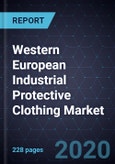Focus on Increasing Comfort for the End User is Driving the Market Toward Material and Design Innovation
Protective clothing is used by various end industries, including manufacturing, oil and gas, automotive manufacturing, and construction to provide protection against work hazards for their workers. Increasing focus on employee wellness and safety has led to the evolution of the protective clothing market in Western Europe. Industrial protective clothing is a mature market in Western Europe and encompasses high visibility, heat and flame, chemical, cold and wet, antistatic, and chainsaw protection. The major end-users are the various industries that face potential workplace hazards in their day-to-day operations.
The market is expected to grow according to the growth achieved by end-user industries, and the growth of end-user industries such as manufacturing, oil and gas, automotive manufacturing, and construction is expected to be muted because of the ongoing COVID-19 pandemic, which has led to industrial lockdowns in the region. However, the market for chemical clothing is buoyed by the high demand for chemical protection from the healthcare industry in Western Europe. The construction industry’s growth has been stalled because of a slowdown in construction activity as a result of the pandemic. This impacts the demand for high-visibility clothing in the region. Heat and flame clothing has witnessed stable growth in the last few years; however, growth is expected to be fragile because of the shutdown of manufacturing in the region for a certain period of time. The antistatic clothing market is buoyed by increasing the growth of medical device and pharmaceutical markets in Western Europe to battle the pandemic. Chainsaw clothing is a niche market serving the forestry industry and arborists.
The market is highly regulated with the EU, EN ISO, and EU Label setting regulations pertaining to the design, usage, and wear and tear of protective clothing. The standards are evolving on a continuous basis, pushing up compliance across industries, and this will lead to higher revenue growth for the protective clothing market.
The market is highly competitive with the presence of both large and small manufacturers in the region. It is further challenged by the presence of distributors that have introduced their own private labels in the market. Branded suppliers are tackling the competition from private labels by providing value-added services to end-users. Such services comprise customization and supply of multifunctional suits to fight multiple potential hazards at one go. For example, flame-resistant suits also include high-visibility properties to tackle potential fire hazards, coupled with low visibility emanating from the smoke.
The protective clothing market is expected to witness increasing consolidation in the future as participants look to broaden their portfolio and market shares.








